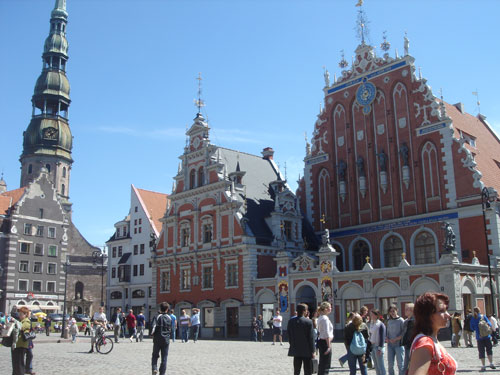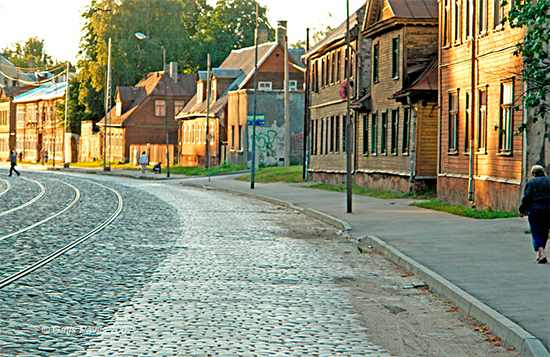Northeastern Europe awaits us, on the shores of the Baltic Sea. Latvian capital Riga is a city that rises very close tot he mouth of the Daugava river in the Gulf of Riga.
The old town of Riga, Vecrïga, combines a medieval aspect in this tangled web of streets with restored houses in Dutch Renaissance style, religious monuments and modernist buildings, containing the best collection of Art Nouveau buildings in the whole of Europe. For this reason, it was declared a World Heritage Site by UNESCO. In the old town, between the Daugava and the Pilsetas kanals, three towers rise above the rest of the buildings: St Peter´s, St Jacob´s and the Cathedral (Dome).

Riga is a cosmopolitan city and the biggest one among all the ones in the Baltic states. It was also chosen as the European Capital of Culture for 2014.
Among the main buildings we´ll find Riga Castle, built in the 14th century, St Peter´s Church made in wood and Gothic style, St James´ Catholic Cathedral, St Mary´s Lutheran Cathedral, St John´s Church, the art galleries and museums located in medieval craft workshops, Mencendorf Mansion and Doma Lukims square.
All in all, it´s an elegant city with exotic balconies, sculptures of humans, animals and mythological beings and spectacular facades with carvings and frescos. It´s a city with a great cultural, historical and architectonical offer.
Riga Castle, Rïgas pils in Latvian, was built on the banks of the Daugava river in 1330, where the first fortresses of this city were built. Today, it´s the symbol of Riga and home to two museums as well as the offices and residence of the Latvian president.
The best view of the medieval part of the castle overlooks the Daugava river. The most representative part is its cylindric tower, of the four that were originally built. In 1484, the castle was destroyed, being rebuilt again in 1515. In 1641, the Swedes built large annexes to the castle and revamped it in the 1930s, being declared a government residency in 1938.
The two museums that the castle holds are the Latvian History Museum (Latvijas Nacionālais Vēstures muzejs) and the Foreign Art Museum (Ārzemju mākslas muzejs). The Latvian History Museum contains a vast collection of items from its origins until the Soviet era, from regional costumes to consumer articles. The Foreign Art Museum exhibits a collection of paintings and Greek and Egyptian sculpture replicas.
Riga is a city with a lot of history, founded by the German bishop Albert von Buxhoevden in 1201. What at first was a germanized Baltic town, later fell to Polish dominance and then to the hands of the Swedish. Later, it was conquered by the Russians and annexed to the Soviet Union and occupied by the Germans in the Second World War. After the War, it was part of the USSR and it finally gained its independence in 1991. Up until 1891, its official language was German, then it became Russian and today it´s Latvian, of course.
Rent apartments in Riga and get taken away by all of its charm.

 English
English
